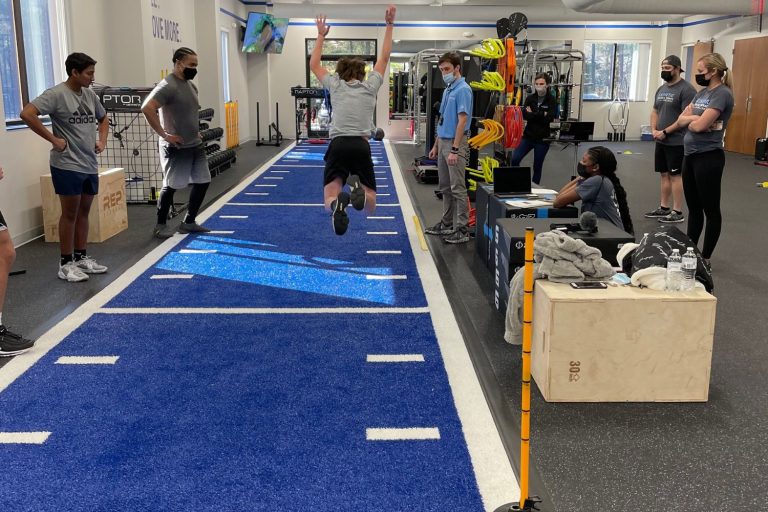

Why Your Shoulder Pain Isn't Going Away This Time
Shoulder pain in older adults often appears suddenly, as if caused by a sudden trauma or injury. But for many shoulder injuries can often the result of musculoskeletal conditions directly associated with wear over time and, more specifically, weakening posture.
Some people may think ‘I slept on it wrong’ or ‘I pulled something in my shoulder, but the truth might point to something more long-term. The pain might be something that’s been developing over time, perhaps due to taking on a tighter, less upright posture as they age.”
According the National Institutes of Health (NIH), anywhere from 44 to 65 percent of all complaints of shoulder pain can be attributed to a condition known as shoulder impingement syndrome – also known simply as “shoulder impingement.”
Shoulder impingement is the result of chronic and repetitive compression of the rotator-cuff tendons in the shoulder, causing inflammation, pain, weakness, and a decreased range of motion in the joint. The condition can be caused by repetitive overhead movements such as those performed by golfers, swimmers and racquet sport athletes.
Changes in posture over time – tightness in the back and neck coupled with an arching of the spine – can create conditions ideal for the development of shoulder impingement. This can cause the rotator cuff to start to fray and tear, which can lead to tendinitis and even tears in the rotator cuff.”
The key to preventing shoulder impingement is regular mobility – moving and stretching your shoulders daily in order to stay loose and counteract the effects of declining posture. To do so here are some exercises to include as a part of your regular exercise regimen.
Back Extension/Shoulder Flexing Stretch: Sitting in a chair, hands clasped together, reach your arms high above your head and slowly reach backward, extending your head and hands behind you. Hold for a few seconds, relax, and then repeat.
Backward Shoulder Extensions: Standing upright, your fingers interlaced behind your back, slowly lift your arms away from your buttocks and toward the ceiling. Lift as high as you can. Keep an upright stance, hold for a few seconds, release, then do it again.
Up-Back Shoulder Reaches: Reach one arm behind your back and, palm facing out, slowly reach up the small of your back toward the space between your shoulder blades. Hold for a few seconds, release, then do the same with your other arm. Repeat one time each.
Down-Back Reaches: Reach your hand behind your head and down your back. Hold for a few seconds, release, and then do the same with your other arm. Repeat one time each.
CLICK HERE TO DOWNLOAD THE EXERCISES
Maintaining a healthy shoulder and preventing the onset of shoulder impingement translates into staying active, playing with the kids, comfortably reaching that top shelf in your cabinet, and even sleeping more comfortably.
Do these exercises but if it’s still not working, of courese a physical therapist can help you get there – or stay there – by thoroughly evaluating your condition and setting you on a personalized path toward pain-free motion.
Please Share
categories
Recent Posts
categories

Why Your Shoulder Pain Isn't Going Away This Time
Shoulder pain in older adults often appears suddenly, as if caused by a sudden trauma or injury. But for many shoulder injuries can often the result of musculoskeletal conditions directly associated with wear over time and, more specifically, weakening posture.
Some people may think ‘I slept on it wrong’ or ‘I pulled something in my shoulder, but the truth might point to something more long-term. The pain might be something that’s been developing over time, perhaps due to taking on a tighter, less upright posture as they age.”
According the National Institutes of Health (NIH), anywhere from 44 to 65 percent of all complaints of shoulder pain can be attributed to a condition known as shoulder impingement syndrome – also known simply as “shoulder impingement.”
Shoulder impingement is the result of chronic and repetitive compression of the rotator-cuff tendons in the shoulder, causing inflammation, pain, weakness, and a decreased range of motion in the joint. The condition can be caused by repetitive overhead movements such as those performed by golfers, swimmers and racquet sport athletes.
Changes in posture over time – tightness in the back and neck coupled with an arching of the spine – can create conditions ideal for the development of shoulder impingement. This can cause the rotator cuff to start to fray and tear, which can lead to tendinitis and even tears in the rotator cuff.”
The key to preventing shoulder impingement is regular mobility – moving and stretching your shoulders daily in order to stay loose and counteract the effects of declining posture. To do so here are some exercises to include as a part of your regular exercise regimen.
Back Extension/Shoulder Flexing Stretch: Sitting in a chair, hands clasped together, reach your arms high above your head and slowly reach backward, extending your head and hands behind you. Hold for a few seconds, relax, and then repeat.
Backward Shoulder Extensions: Standing upright, your fingers interlaced behind your back, slowly lift your arms away from your buttocks and toward the ceiling. Lift as high as you can. Keep an upright stance, hold for a few seconds, release, then do it again.
Up-Back Shoulder Reaches: Reach one arm behind your back and, palm facing out, slowly reach up the small of your back toward the space between your shoulder blades. Hold for a few seconds, release, then do the same with your other arm. Repeat one time each.
Down-Back Reaches: Reach your hand behind your head and down your back. Hold for a few seconds, release, and then do the same with your other arm. Repeat one time each.
CLICK HERE TO DOWNLOAD THE EXERCISES
Maintaining a healthy shoulder and preventing the onset of shoulder impingement translates into staying active, playing with the kids, comfortably reaching that top shelf in your cabinet, and even sleeping more comfortably.
Do these exercises but if it’s still not working, of courese a physical therapist can help you get there – or stay there – by thoroughly evaluating your condition and setting you on a personalized path toward pain-free motion.
Please Share









